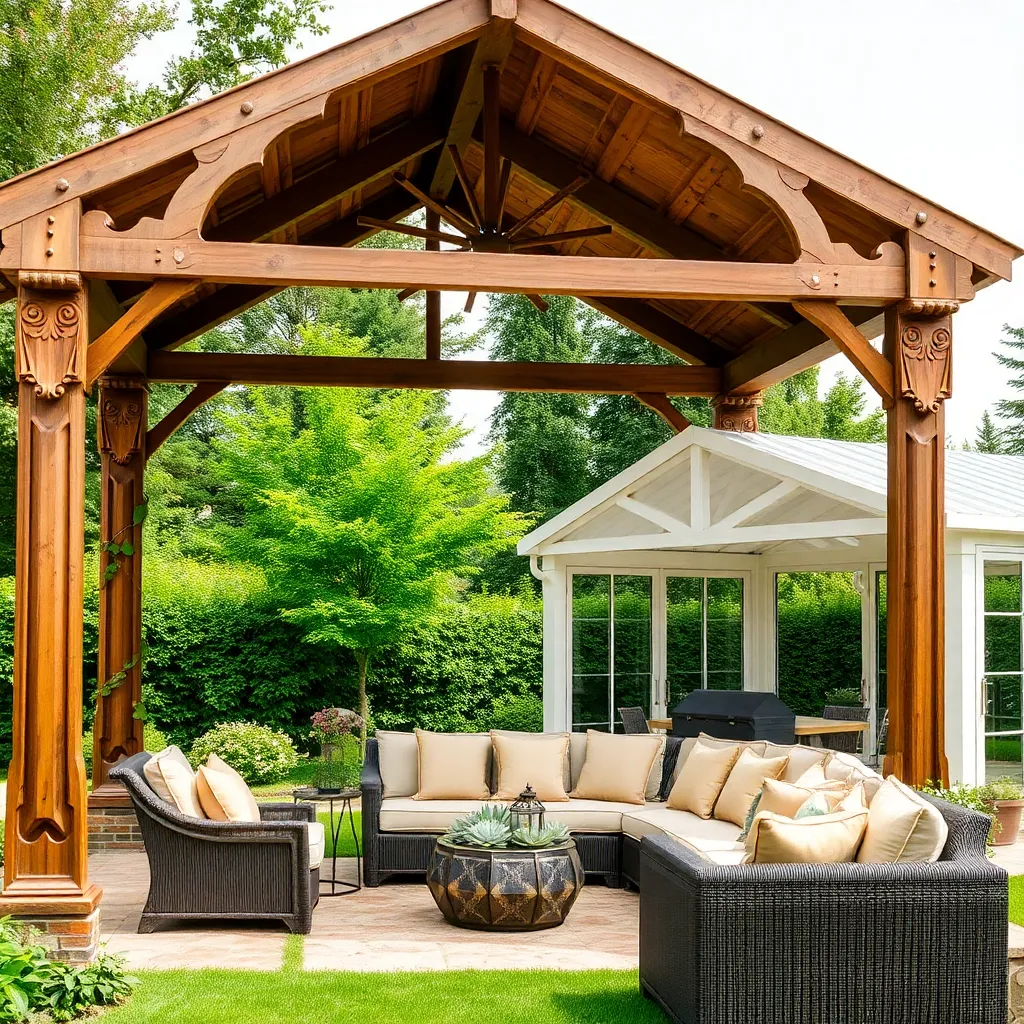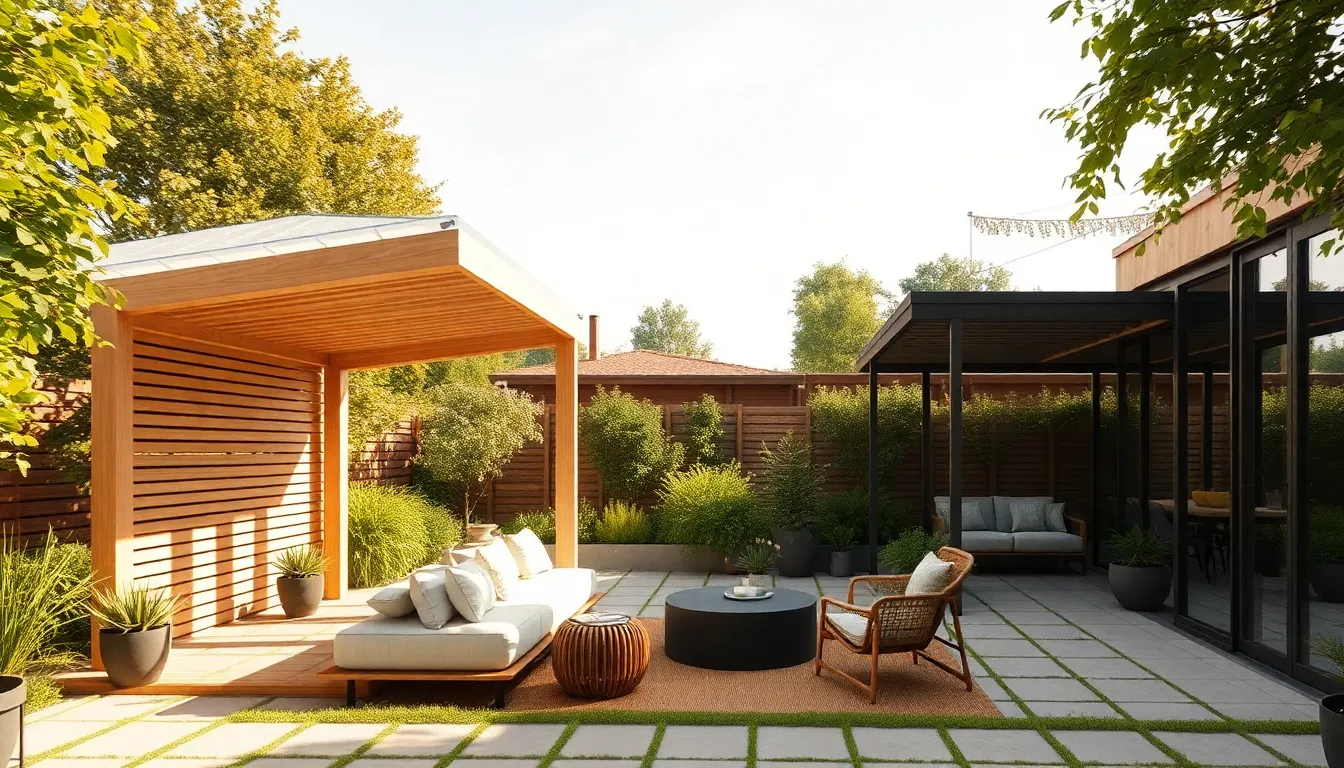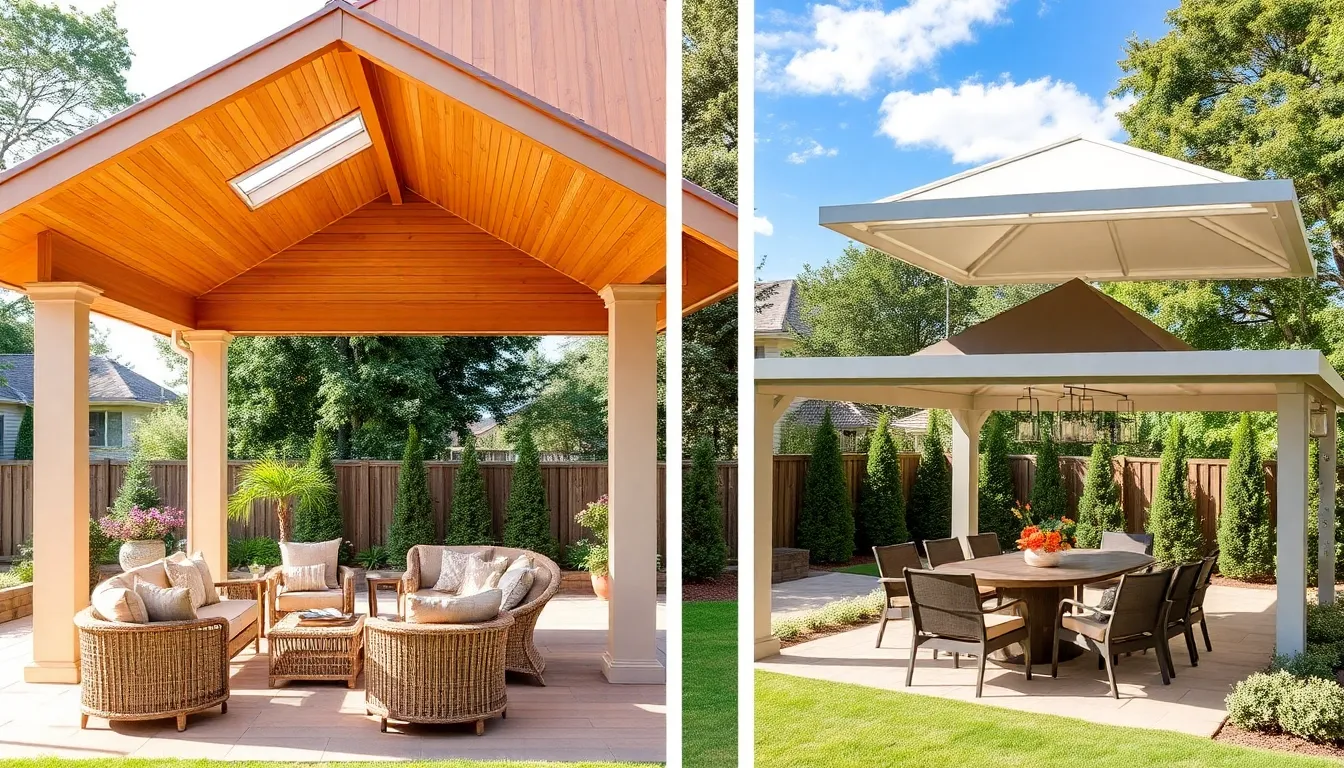Transforming your garden into a personal haven is more than just a trend—it’s a way of life that brings joy and tranquility to your doorstep. Whether you’re a beginner eager to craft your first outdoor oasis or a seasoned homeowner looking to refresh your space, a garden pavilion can be the crown jewel of your outdoor design. These versatile structures offer both shelter and style, serving as cozy retreats for relaxation or vibrant hubs for gatherings.
In this article, we’ll explore 12 garden pavilion structures that seamlessly blend functionality with beauty, ensuring your outdoor space reflects your unique taste and needs. From sleek, modern designs to charming, rustic styles, you’ll discover options that cater to every preference and budget. Get ready to be inspired and equipped with actionable ideas to elevate your outdoor living experience.
Exploring Classic Pavilion Designs
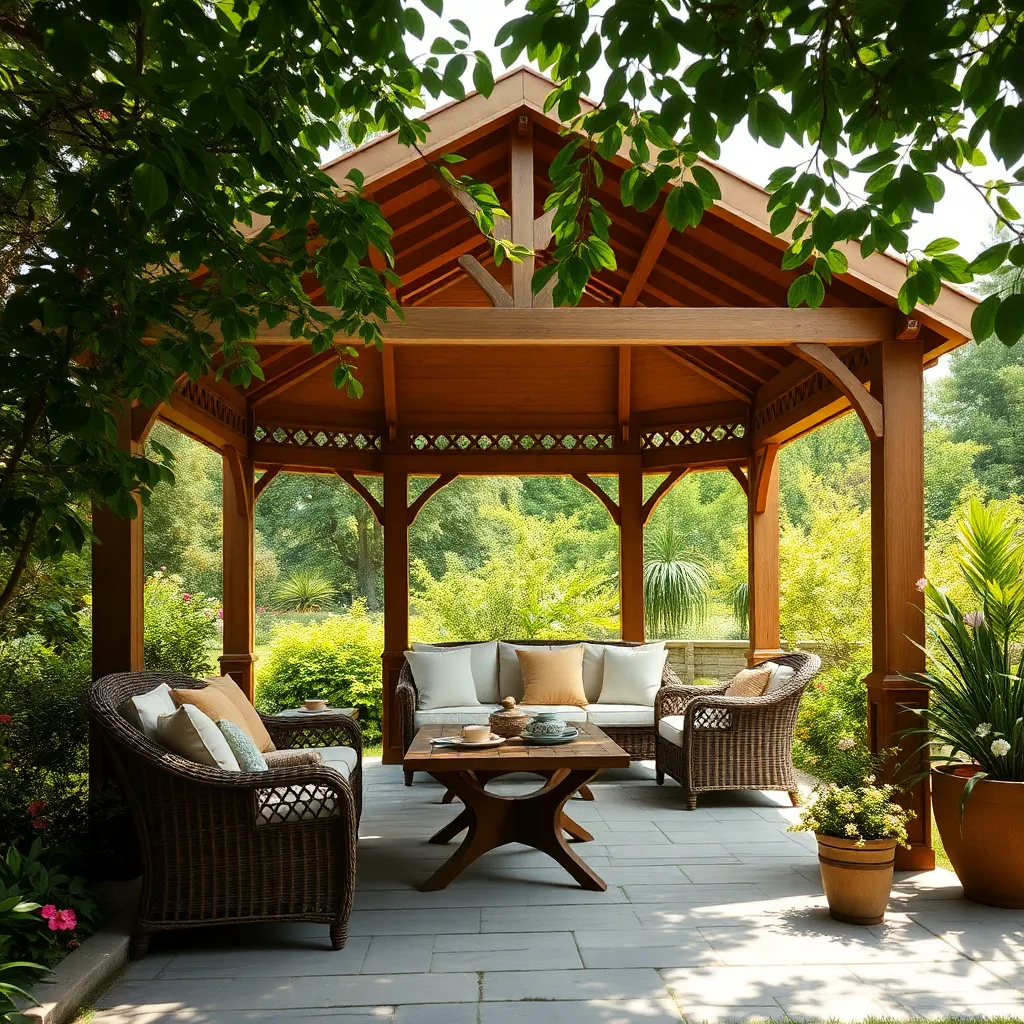
When exploring classic pavilion designs for your garden, start by considering a traditional octagonal structure. This design not only offers a balanced aesthetic but also provides ample space for seating or a small dining area. Choose materials like cedar or redwood for their natural resistance to decay, ensuring longevity. For beginners, prefabricated kits can simplify the process, while experienced builders might prefer the customization of a DIY approach, tailoring dimensions to fit specific garden spaces.
Incorporating classic design elements such as decorative railings and intricate roof patterns can enhance the pavilion’s charm. A shingled roof is a popular choice for its durability and weather resistance. To add an elegant touch, consider integrating lattice panels for climbing plants, providing both shade and a lush ambiance. Advanced gardeners might explore adding built-in seating or lighting fixtures, making the pavilion a multifunctional space for relaxation or entertainment. Use these tips to create a timeless retreat that seamlessly blends with any garden style.
Modern Pavilion Styles to Consider
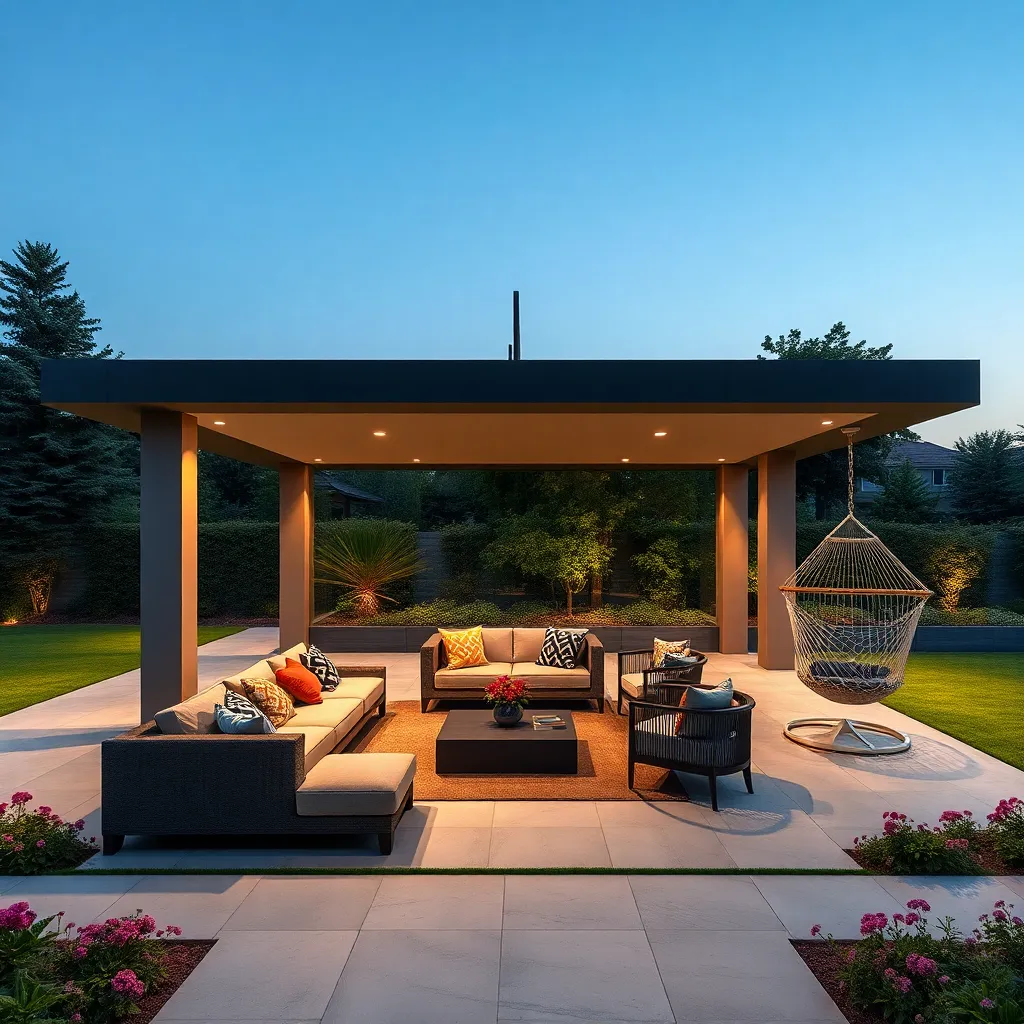
When considering modern pavilion styles, think about incorporating clean lines and minimalist design elements. Opt for materials like powder-coated aluminum and tempered glass for a sleek, contemporary look that withstands the elements. For a beginner-friendly project, focus on a simple, open-frame design with dimensions around 10×10 feet, which provides ample space without overwhelming a garden.
For those looking to add a touch of luxury, consider integrating advanced features like built-in lighting or retractable roofs. Use sustainable materials such as bamboo or composite decking to enhance both aesthetics and environmental responsibility. A well-planned pavilion can serve as a stylish focal point in your garden, offering both functionality and an inviting space for relaxation.
Choosing the Right Materials
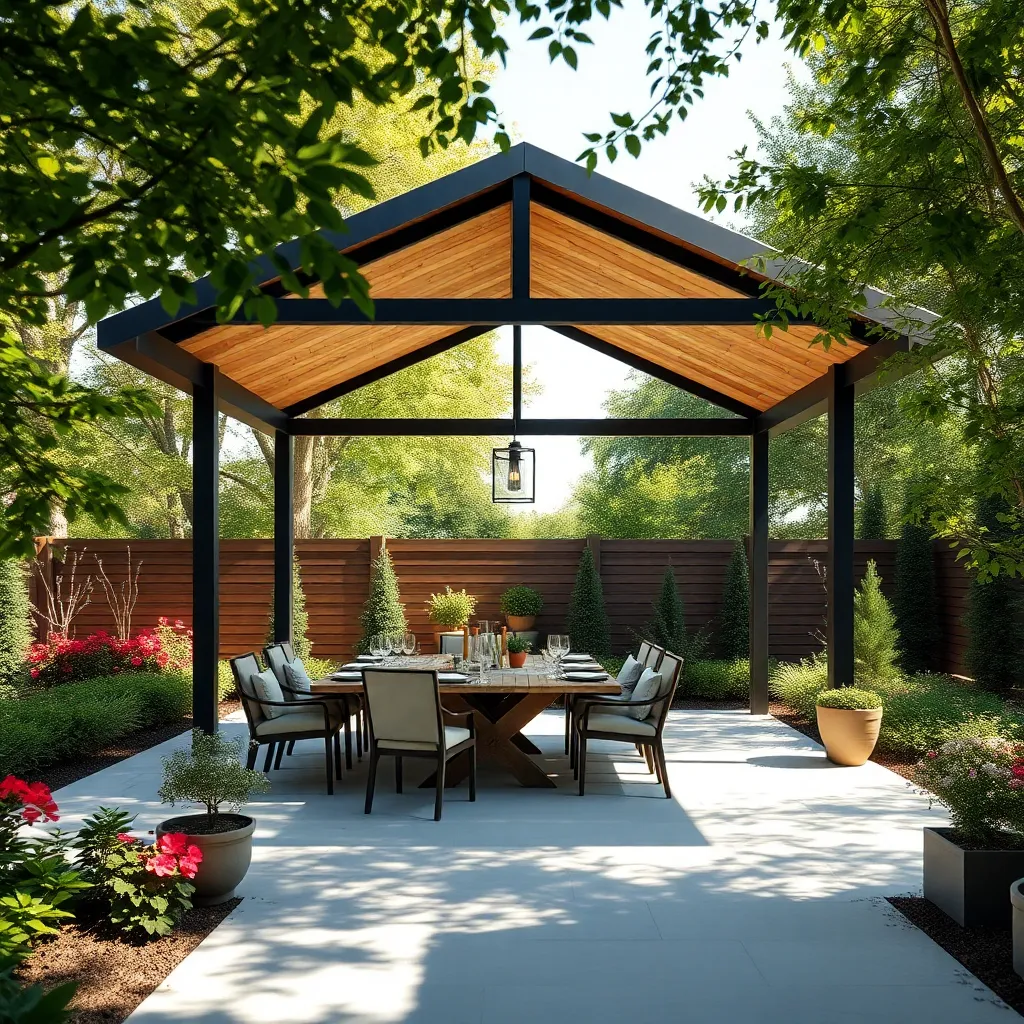
When choosing materials for your garden pavilion, consider durability and local climate. Wood, such as cedar or redwood, offers a natural look and resists decay, making it ideal for most regions. For a modern touch, consider using steel or aluminum, which are low-maintenance and can withstand harsh weather conditions. If you’re seeking a more traditional aesthetic, stone or brick can provide a timeless appeal, though they may require more expertise in construction.
In addition to aesthetics, think about the functionality and maintenance of your chosen materials. Composite materials can be a great option for those seeking a balance between durability and easy upkeep, as they resist rot and insects. Consider using UV-resistant materials for any roofing to protect against sun damage. For added stability, ensure posts are securely anchored, ideally with concrete footings. Tailor the size and design of your pavilion to fit your garden’s dimensions, ensuring it complements your outdoor space without overwhelming it.
Incorporating Natural Elements Seamlessly
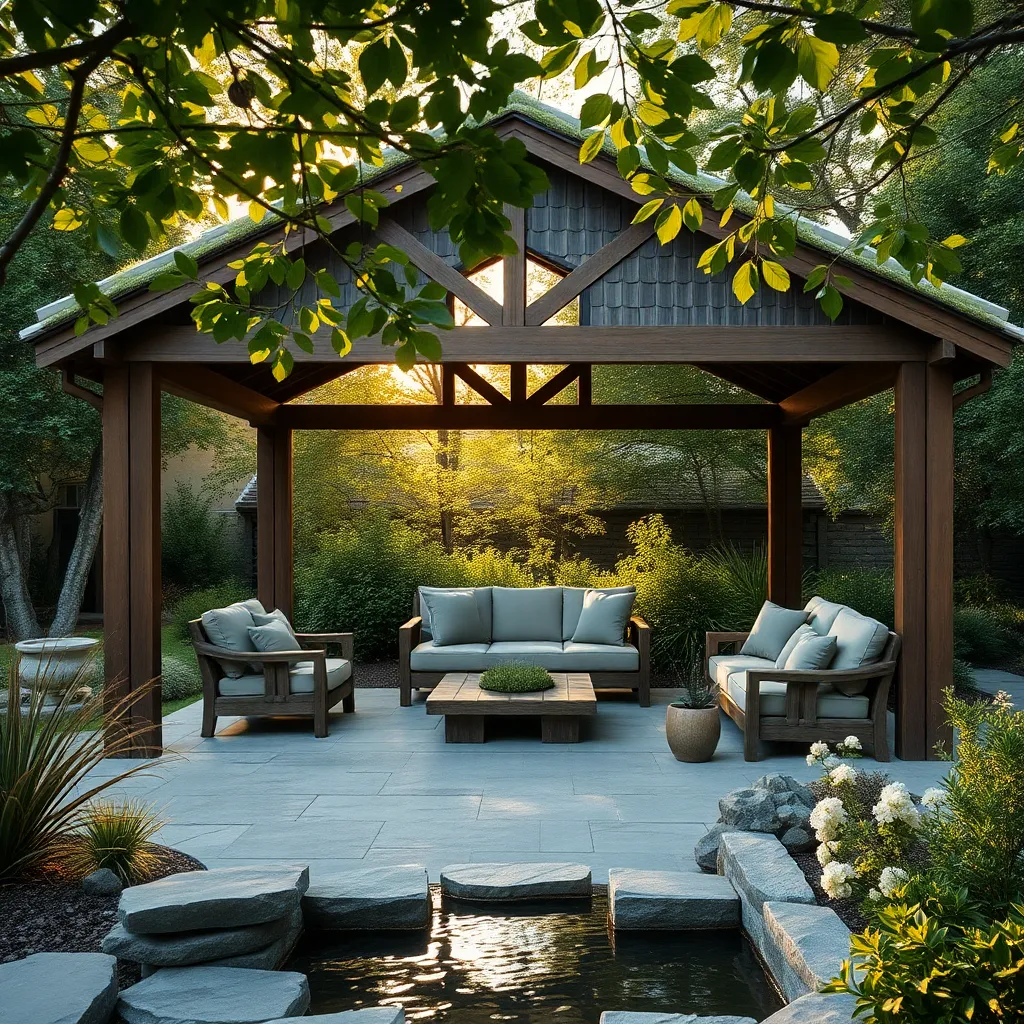
To seamlessly incorporate natural elements into your garden pavilion, consider using materials that blend harmoniously with the surrounding environment. Wood, stone, and bamboo are excellent choices, as they offer a rustic charm and complement the greenery. Opt for untreated or naturally weather-resistant wood like cedar or teak to create a durable structure that ages gracefully. For a touch of sophistication, stone can be used as a base or support, providing both aesthetic appeal and stability.
Incorporating living elements, such as climbing plants, can further enhance the natural feel of your pavilion. Choose fast-growing vines like wisteria or clematis to cover trellises or pergolas, offering shade and a splash of color. For those ready to experiment, consider a green roof planted with succulents or moss, which not only looks stunning but also improves insulation. Ensure that any living elements are suited to your climate and maintenance capabilities to keep your shelter as low-maintenance as possible.
Maximizing Space and Comfort
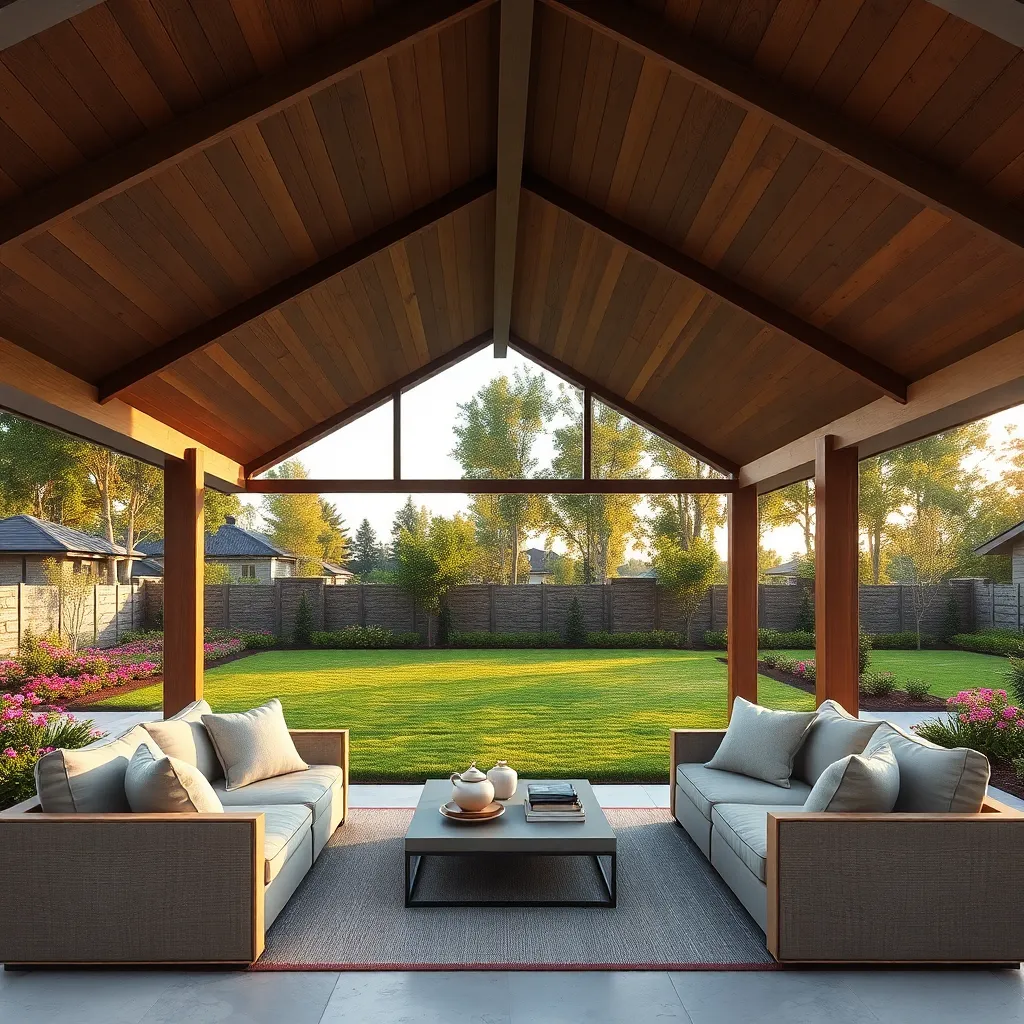
To maximize space and comfort in your garden pavilion, consider using a modular design that allows flexibility and adaptation to your specific needs. Opt for lightweight materials like aluminum or cedar, as these are both durable and weather-resistant, ensuring your pavilion stands the test of time. Beginners can start with simple, prefabricated kits that are easy to assemble, while more advanced gardeners might explore custom designs that incorporate built-in seating or storage solutions for added functionality.
Integrating multi-functional elements is key to making the most of your outdoor space. Consider installing retractable awnings or sliding panels that allow you to adjust the pavilion’s exposure to weather conditions, providing shade during hot days and opening up to the stars at night. For a cozy touch, add weatherproof cushions and throws to seating areas, and incorporate outdoor lighting such as solar-powered lanterns for ambiance. These enhancements not only elevate comfort but also make your pavilion a welcoming retreat all year round.
Creating Shade with Style
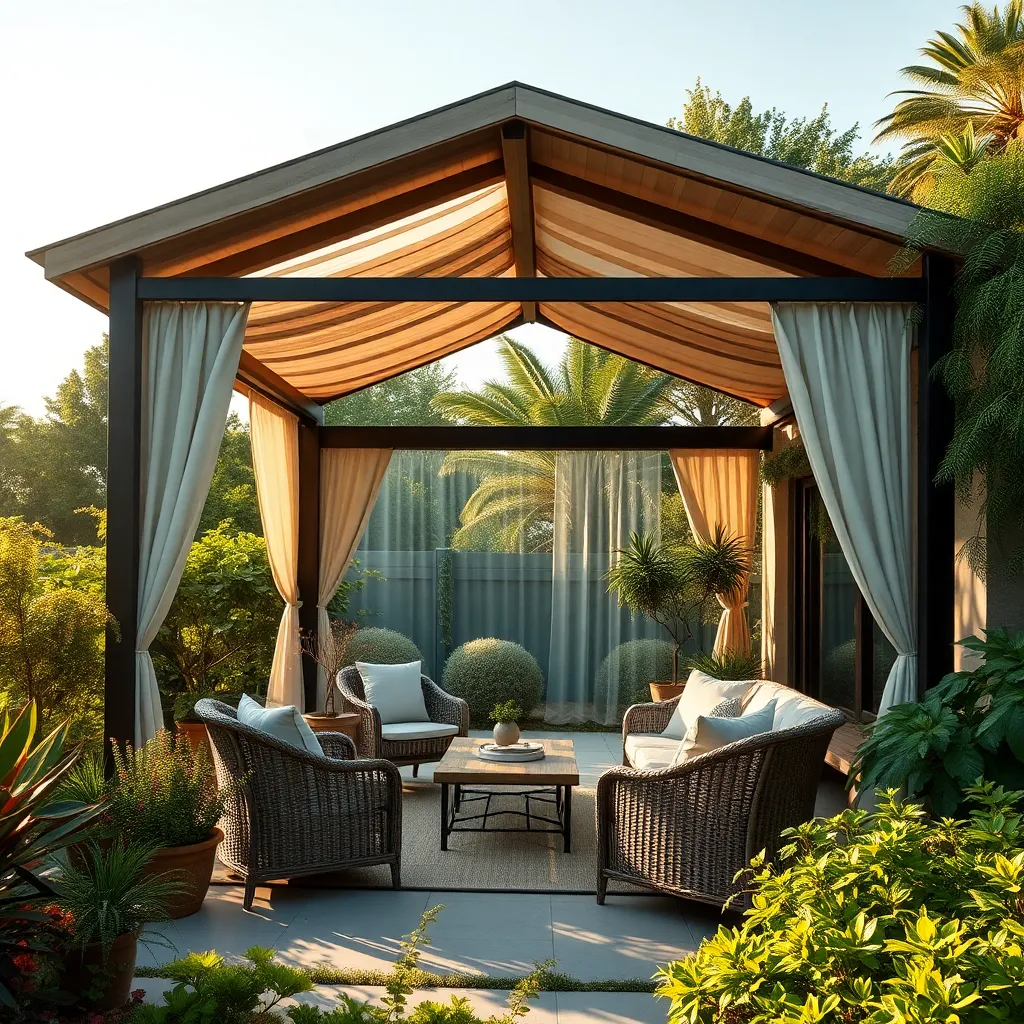
When creating shade with style, consider incorporating **natural materials** like bamboo or cedar to blend seamlessly with your garden’s aesthetic. These materials not only offer durability but also add a rustic charm that complements any outdoor space. For beginners, a simple pergola with **open rafters** provides ample shade while allowing a dappled light effect, enhancing the ambiance. For a more advanced touch, consider adding **retractable canopies** or **shade sails** that can be adjusted based on the sun’s position, providing both style and versatility.
Design elements such as **climbing plants** can add life and color to your shade structures. Training vines like wisteria or clematis to grow over the structure adds a natural, cooling element that is both beautiful and functional. Pay attention to dimensions; a standard pergola might measure around **8×10 feet**, but adjusting this to fit your space ensures maximum comfort and usability. For those seeking a contemporary look, integrating **metal accents** or using **polycarbonate roofing** can provide a sleek finish while protecting from UV rays. Remember, the key is to create a space that is both inviting and practical, making your garden a true oasis.
Integrating Lighting for Ambiance
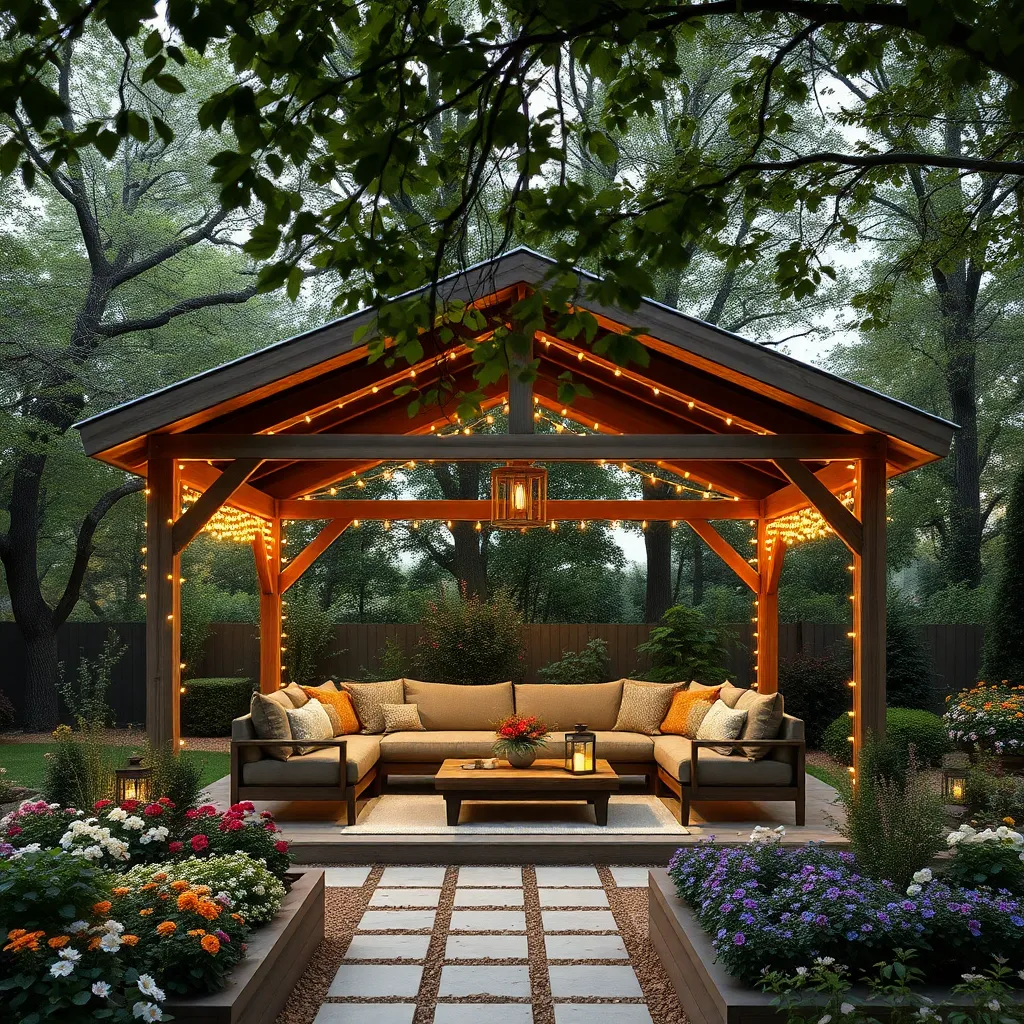
Integrating lighting into your garden pavilion can transform the space into a serene retreat, perfect for evening relaxation or entertaining guests. Start with solar-powered LED string lights to create a warm and inviting atmosphere. These are easy to install and require no wiring, making them ideal for beginners. For a more sophisticated touch, consider low-voltage landscape lighting to highlight architectural features or pathways. This can be achieved using spotlights or well lights strategically placed to enhance the pavilion’s design.
For those seeking advanced options, incorporating dimmable fixtures provides flexible ambiance control. Opt for weather-resistant materials like stainless steel or powder-coated aluminum to withstand outdoor elements. You can also add lanterns or pendant lights with a rustic finish to complement wooden structures. When planning your layout, ensure that lighting is balanced and not overpowering, and if wiring is involved, consult a professional to ensure safety and compliance with local codes.
Adapting to Seasonal Changes

When adapting your garden pavilion to seasonal changes, consider incorporating versatile materials that can withstand various weather conditions. Opt for weather-resistant woods like cedar or teak, and use outdoor-rated fabrics for any cushions or curtains. These materials not only provide durability but also add a touch of elegance. For those seeking advanced solutions, consider installing retractable awnings or adjustable louvered roofs to manage sunlight and rain effectively.
Integrating seasonal design elements can further enhance your pavilion’s utility throughout the year. In colder months, adding portable heaters or fire pits can create a cozy atmosphere, while fans or misting systems help cool the space in the summer. Creating removable panels or curtains is a great way to shield against wind and offer shade when needed. By thoughtfully selecting these elements, you ensure comfort and style in every season.
Personalizing with Decorative Accents
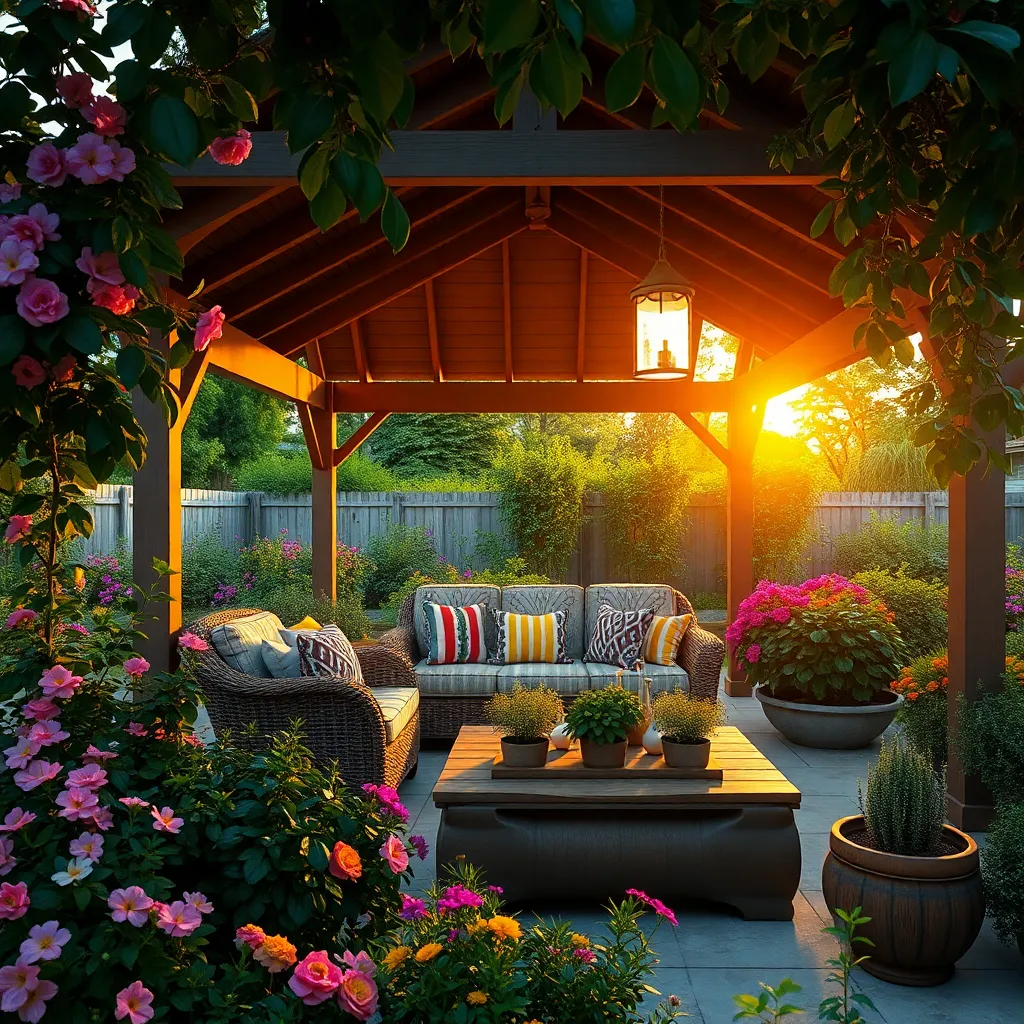
Adding decorative accents to your garden pavilion can transform it into a personalized retreat. Start by incorporating outdoor rugs and cushions to introduce color and comfort, using weather-resistant materials like polypropylene or acrylic. For a more advanced touch, consider installing string lights or lanterns to create an inviting ambiance during evening hours. Choose solar-powered options to minimize energy use and maintenance.
For a cohesive look, integrate planters and hanging baskets around your pavilion, selecting plants that thrive in your local climate. Beginners might opt for low-maintenance options like succulents or geraniums. Meanwhile, advanced gardeners could explore vertical gardens or trellises for climbing plants. These natural elements not only enhance aesthetic appeal but also blend the structure seamlessly into your garden landscape.
Ensuring Stability and Durability
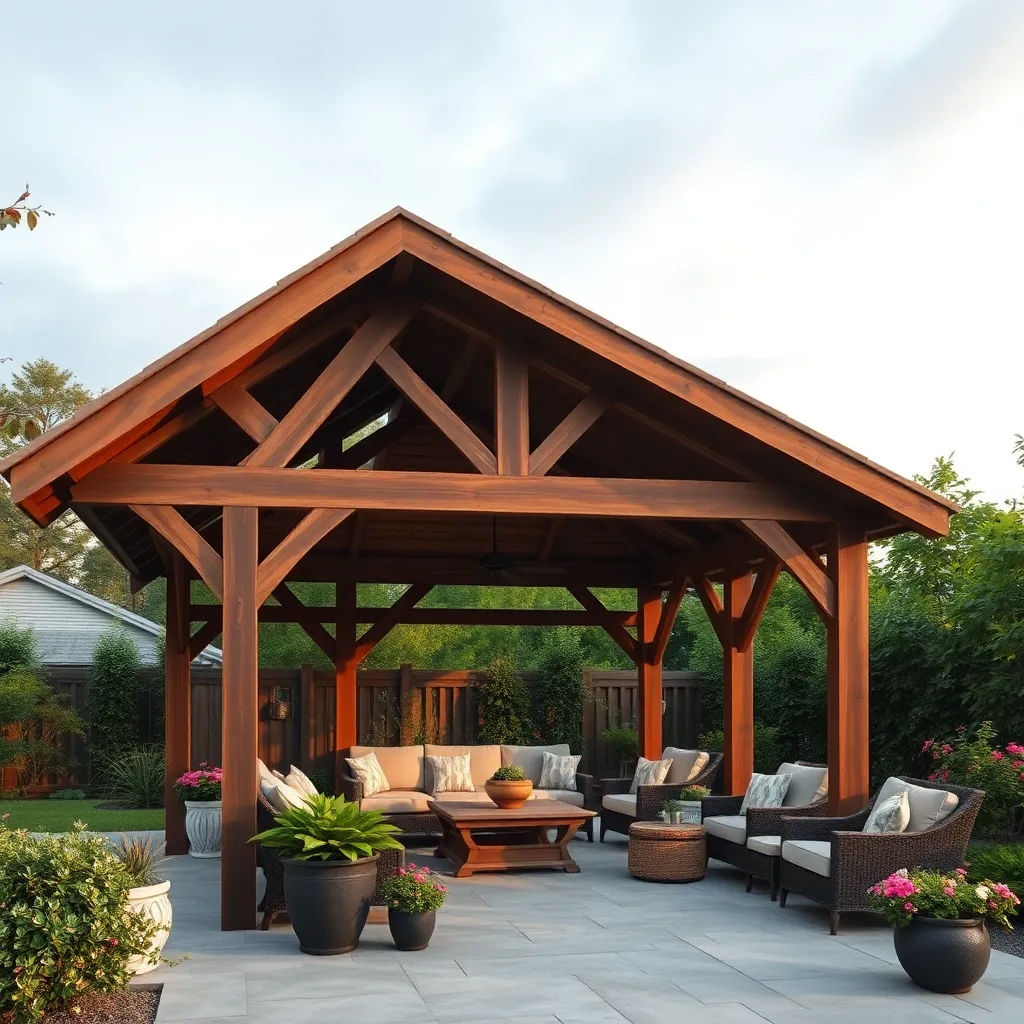
To ensure stability and durability in your garden pavilion, start by selecting the right materials. Opt for weather-resistant woods like cedar or teak, which naturally repel insects and withstand moisture. Alternatively, consider metal frames made from aluminum or galvanized steel for added strength and longevity. Anchor your pavilion securely by using concrete footings, especially important in areas prone to strong winds or heavy rain. This foundational step not only enhances stability but also prolongs the life of your structure.
Design elements play a crucial role in the durability of your garden pavilion. Incorporate cross-bracing to reinforce the frame, which helps it resist lateral forces. For roofing, choose materials such as polycarbonate panels or corrugated metal that offer both protection from the elements and a long lifespan. Ensure proper drainage by installing a slight roof pitch, preventing water accumulation that can cause damage over time. With these thoughtful touches, your pavilion will be a resilient and lasting addition to your outdoor space.
Eco-Friendly Pavilion Options
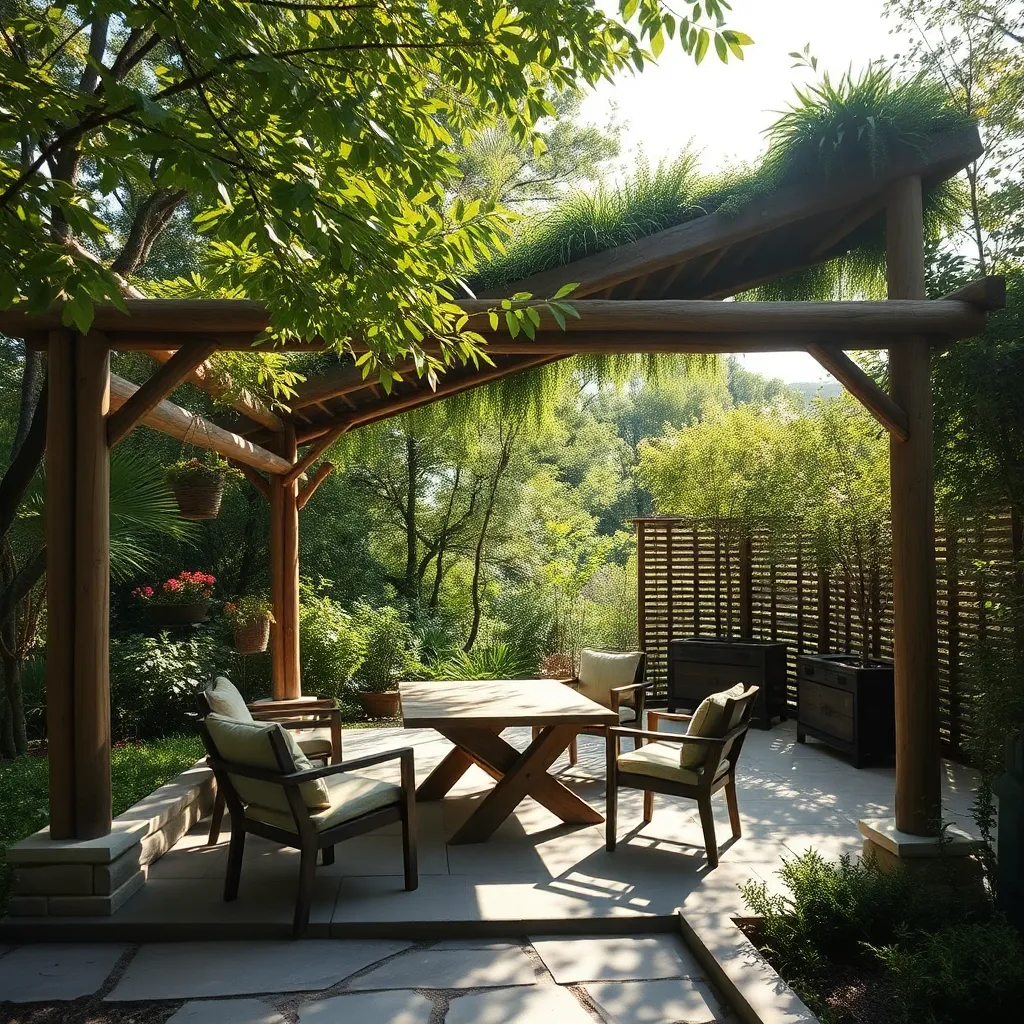
For an eco-friendly garden pavilion, consider using sustainable materials such as reclaimed wood or bamboo. These materials not only reduce environmental impact but also add a rustic charm to your outdoor space. When constructing your pavilion, ensure that the structure’s size fits well within your garden; a popular dimension for a cozy setup is around 10×10 feet, providing ample space for seating while maintaining an intimate feel.
Incorporate green design elements like a living roof or climbing plants that naturally cool the area. Advanced gardeners can install solar panels to power lighting or small appliances, enhancing the pavilion’s functionality while remaining eco-conscious. For beginners, starting with simple elements like a rainwater collection system can effectively support surrounding plants and create a self-sustaining environment.
Budget-Friendly Pavilion Ideas
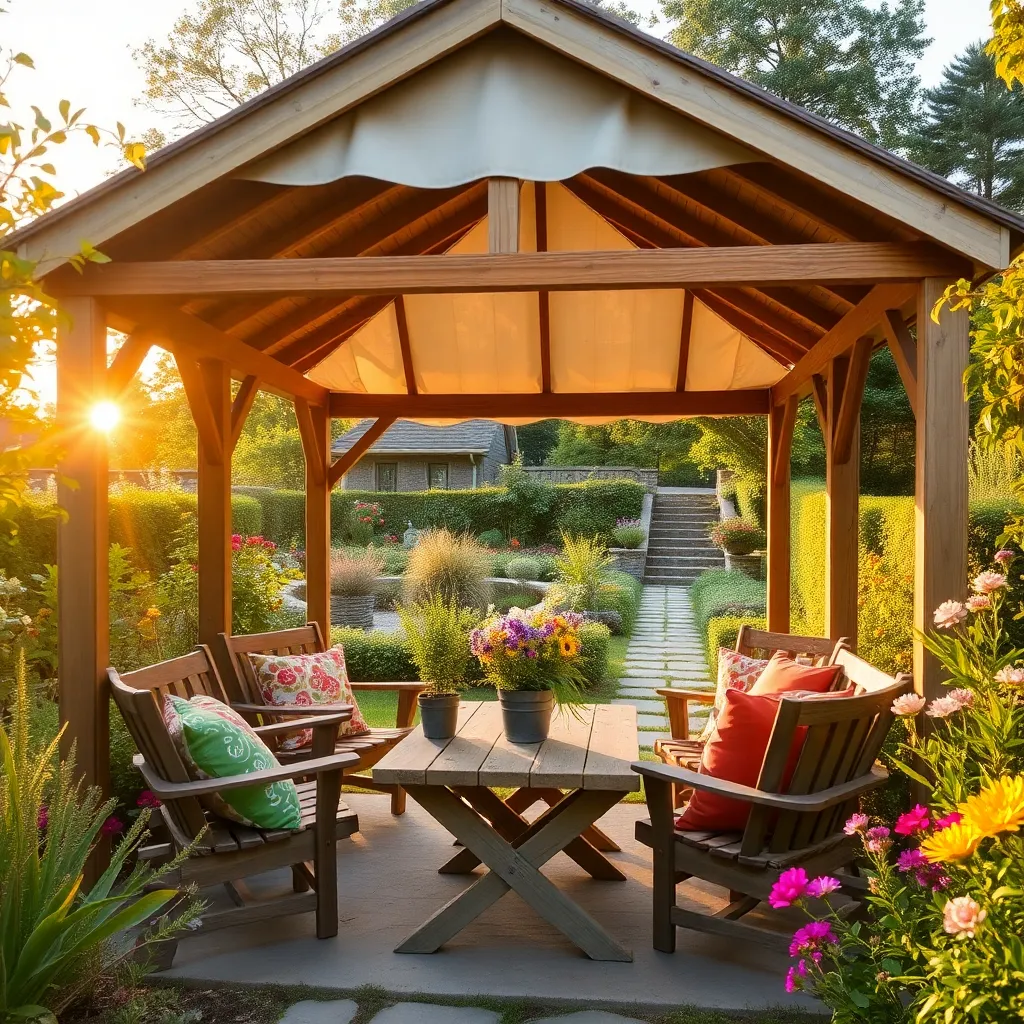
Creating a budget-friendly pavilion in your garden doesn’t mean sacrificing style or function. Start by considering a simple wooden frame using affordable yet durable materials like pressure-treated pine or cedar, which resist rot and insects. Opt for a basic square or rectangular design with dimensions around 10×10 feet to keep costs manageable. Cover the structure with a polycarbonate roof to provide weather protection while allowing natural light. For a personal touch, add a splash of color with outdoor paint or stain to complement your garden’s aesthetic.
For those with a bit more experience, using salvaged materials can significantly cut costs and add unique character to your pavilion. Scour local salvage yards for reclaimed wood, old doors, or windows that can be repurposed as walls or decorative elements. Constructing a pavilion with these materials not only saves money but also promotes sustainability. To ensure stability and safety, reinforce structures with metal brackets and braces. These elements, combined with strategic landscaping like climbing plants or hanging planters, can transform your pavilion into a charming, eco-conscious retreat.
Conclusion: Creating Beautiful Outdoor Spaces
As we’ve journeyed through the 12 garden pavilion structures, we’ve also unearthed key relationship concepts: the importance of solid foundations, embracing diversity, nurturing growth, creating safe havens, balancing space and intimacy, fostering communication, celebrating uniqueness, adaptability, resilience, shared goals, maintenance, and the beauty of simplicity. Each concept serves as a gentle reminder that relationships, much like gardens, flourish with care and intention.
Now, let’s turn inspiration into action. Choose one concept that resonates most with your current relationship dynamic and commit to implementing it this week. Whether it’s setting aside dedicated time for meaningful conversation or simplifying your expectations to enjoy the present moment, taking a single step can nurture profound growth.
Before you go, make sure to save or bookmark this article. It will serve as a valuable resource when you seek guidance or a fresh perspective on your relationship journey.
Remember, every relationship holds the potential for lasting success. With each thoughtful interaction and intentional action, you’re building a future where love and connection thrive. Let’s cultivate relationships that not only endure but blossom beautifully over time.

